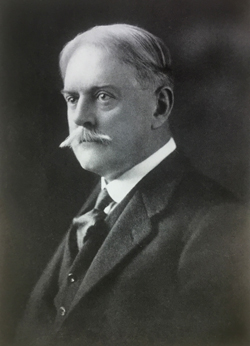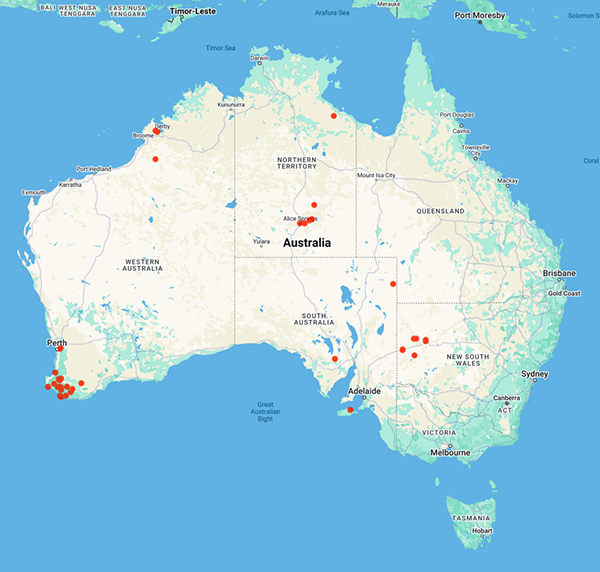
Council of Heads of Australasian Herbaria
Australian National Herbarium
Biographical Notes
 |
Council of Heads of Australasian Herbaria |
 Pulleine, Robert Henry (1869 - 1935)
Pulleine, Robert Henry (1869 - 1935)Born on 7 June 1869 at Picton, Marlborough, New Zealand; died on 13 June 1935 in Adelaide, SA.
His six siblings were all born in New Zealand from 1870 to 1879 and the family moved to Tasmania in 1880.
Late in 1881 the family moved from Hobart to Adelaide
In Adelaide Robert was sent to St Peter's College where he won a prize for diligence at the end of 1882. His schooling at St Peter's finished prematurely at the end of 1884 however, probably because of financial hardship following his father's failed business venture.
Robert gained a cadetship with the Public Library from 16 February 1885 to 31 October 1887; in the neighbouring South Australian Museum he developed his interest in natural science.
He taught at the Adelaide Collegiate School before entering the University of Adelaide in 1892, completing his medical training at the University of Sydney Medical School (M.B., Ch.M., 1898) and Royal Prince Alfred Hospital.
From 1900-1905 Pulleine worked at the Queensland gold-mining town of Gympie.
Pulleine took his family to Göttingen, Germany, in 1905 to study diseases of the eye, ear, nose and throat. After further study in Britain, he returned in 1907 to Adelaide to become a highly respected consultant in these diseases.
Pulleine's practice supported his naturalist interests, particularly the importing of cacti seeds and plants and collecting trips to Tasmania and Central Australia. His valuable collection of books, Aboriginal artefacts and paintings were housed in a twenty-two-room, bluestone home with five acres (2 ha) of garden at Netherby near Adelaide.
He belonged to eighteen learned societies, ranging from the American Cactus Society to the Linnean Society of London, and including the Royal Geographical Society of Australasia and the Royal and Anthropological societies of South Australia; he was president of six.
His botanical interests were not merely antiquarian; he identified several new plant species in South Australia and exchanged specimens with horticulturalists overseas. Many of the specimens were cultivated in his garden, which had over one thousand succulents alone. He investigated arid zone plants, and, after propagation he posted parcels of these to outback teachers to plant in school gardens.
Pulleine was a tall, strong man with a moustache who read widely, sang, entertained, and was gentle and kindly but firm; he could appear forbidding. With his friend Archibald Watson he owned Walwa Private Hospital.
Pulleine died Walwa Hospital of pneumonia complicating diabetes mellitus on 13 June 1935, and was buried in Mitcham cemetery.
J.M. Black named Carpobrotus (Sarcozoma) pulleinei after him in 1932.
Source: Extracted from:
https://adb.anu.edu.au/biography/pulleine-robert-henry-8129
https://www.eoas.info/biogs/P002503b.htm
https://www.wikiwand.com/en/articles/Robert_Pulleine
Philippa Horton, Andrew Black & Brian Blaylock (2017). 'Ornithology at the South Australian Museum, Adelaide: 1856 to 1939'. In Contributions to the History of Australasian Ornithology IV, Memoirs of the Nuttall Ornithological Club, No.23
Portrait Photo: Trans.Roy.Soc.SA, Vol.LIX, frontis-piece, accompanying obituary (1935).
Data from 216 specimens
